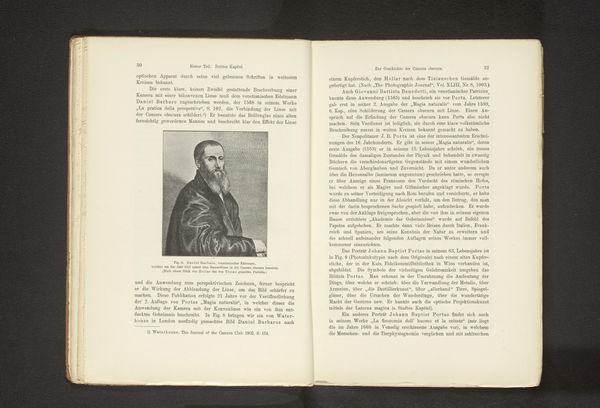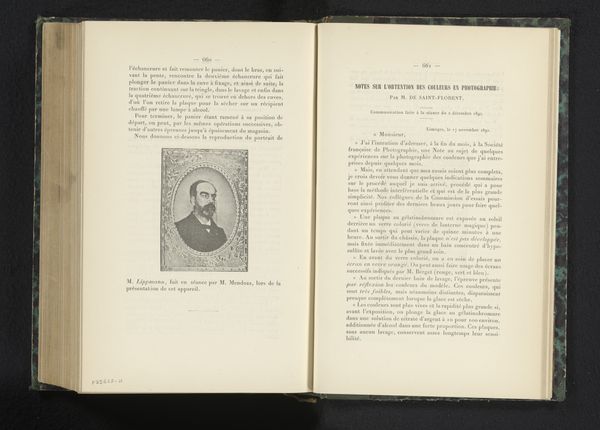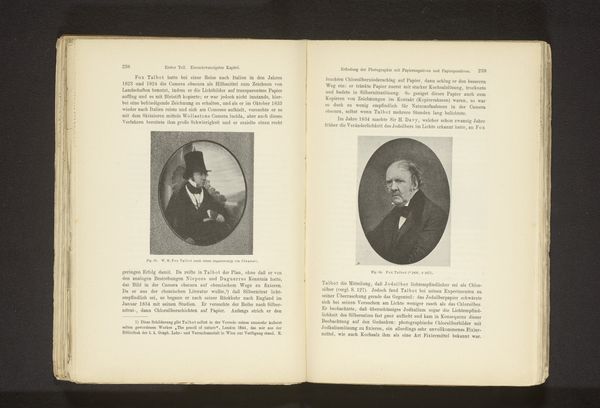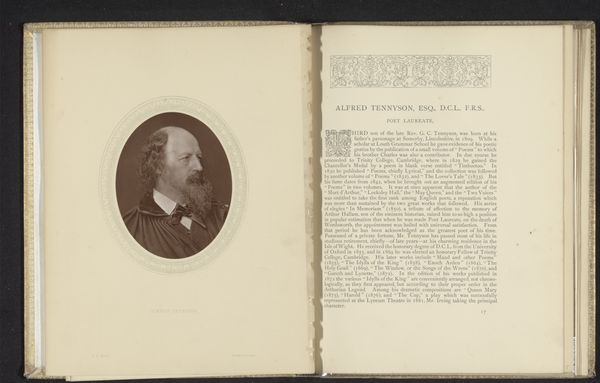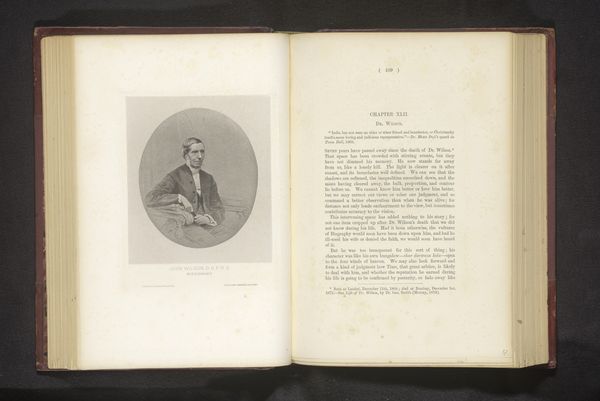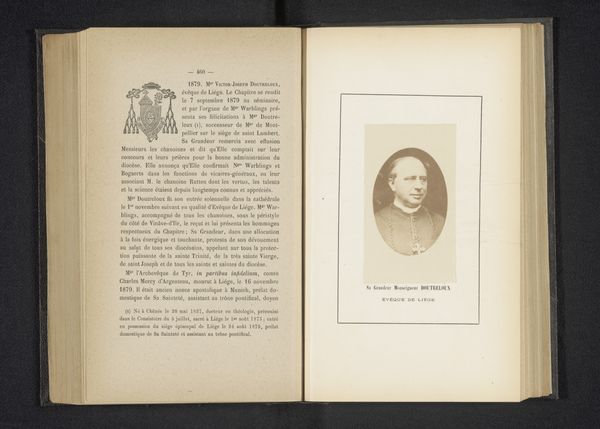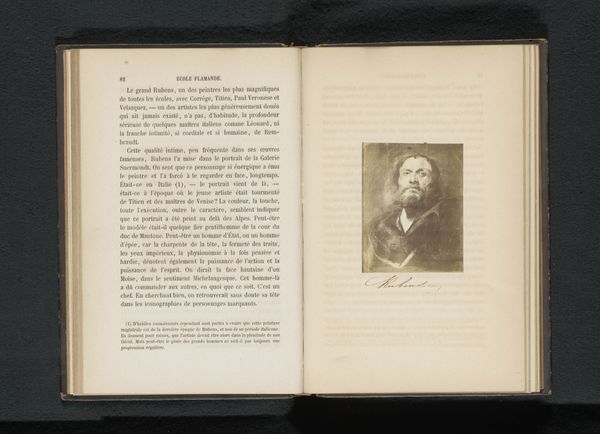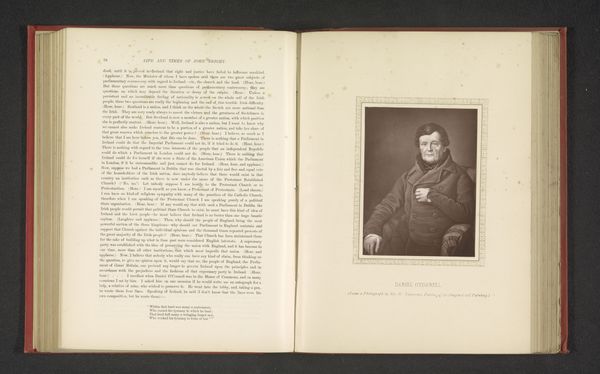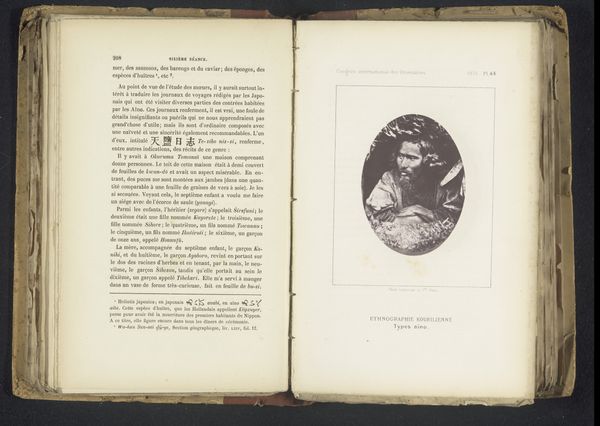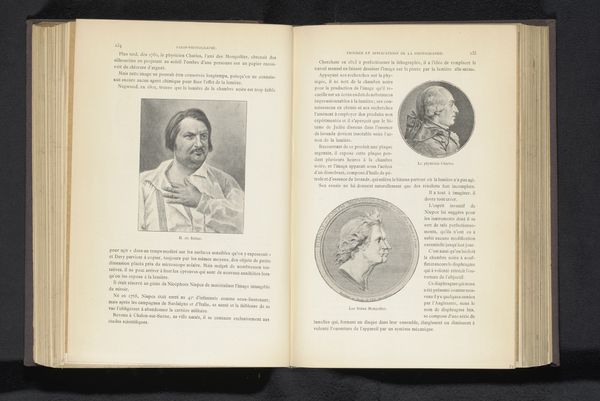
Fotoreproductie van een prent, voorstellende een portret van Joseph Petzval before 1905
0:00
0:00
#
aged paper
#
homemade paper
#
paper non-digital material
#
paperlike
#
personal journal design
#
personal sketchbook
#
folded paper
#
thick font
#
letter paper
#
paper medium
Dimensions: height 90 mm, width 65 mm
Copyright: Rijks Museum: Open Domain
Curator: What strikes me immediately is this document's physicality, its very being as aged paper printed with a photographic reproduction. What do you notice, starting with this representation of Joseph Petzval? Editor: We're looking at a book spread, a photostat of a portrait of Joseph Petzval, and the facing page is covered in German text. The pages look old, maybe from the late 19th century, early 20th. It feels scholarly, academic...What can you tell me about this from a materialist's perspective? Curator: Consider the labor involved in its creation. Someone, likely a skilled technician, meticulously reproduced an earlier photograph using processes dependent on chemical manipulation and a complex array of technologies to fix the image onto the paper. How does understanding this production alter our appreciation? Editor: It makes me think about the democratization of images. Before photostats, only a limited number could see an original photograph, right? Here, the mass-produced book makes knowledge accessible. Is that what you are hinting at? Curator: Exactly! This reproductive technology reflects a desire to disseminate knowledge widely. Moreover, what kind of social networks were important to allow Petzval's thinking on optics to reach a wider audience via the technologies shown on the page? It also invites consideration about value. Does reproduction cheapen or amplify value? What do you think? Editor: It’s complex, isn’t it? The book diminishes the original image’s aura, but its knowledge becomes democratized and more pervasive. Curator: And how does the materiality – the paper, the ink – play into its survival, its presence with us today? Consider the industrial networks that have helped spread knowledge using photomechanical book printing! Editor: I hadn’t really considered the implications of just paper and ink having this transformative impact. Now, I look at it differently; the photostat is an important technology enabling wider participation in cultural and scientific dialogue. Thanks! Curator: It’s fascinating to unravel the web of production that brings these historical images to us, and to recognize that, in itself, the process tells a history of consumption.
Comments
No comments
Be the first to comment and join the conversation on the ultimate creative platform.
